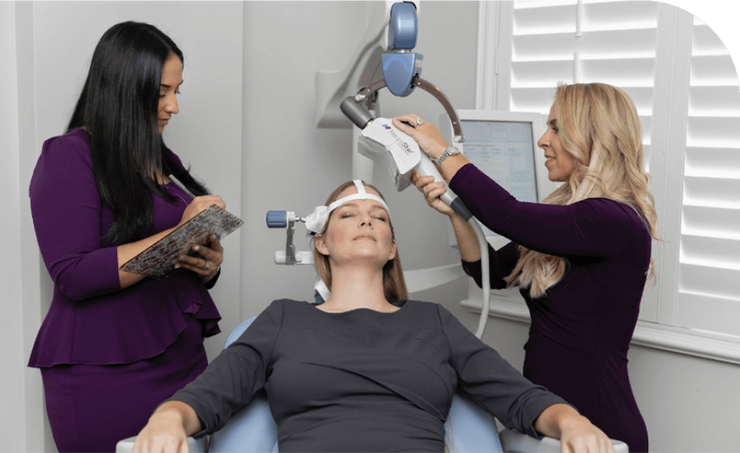In the constant pursuit of innovative solutions for mental health and neurological conditions, a groundbreaking technology has emerged, harnessing the power of magnetic fields to modulate brain activity – Transcranial Magnetic Stimulation (TMS). This non-invasive and medication-free approach has garnered significant attention for its potential to alleviate symptoms of depression, anxiety, and other neurological disorders, offering a beacon of hope for those seeking alternative treatment options.
At its core, TMS therapy relies on the principles of electromagnetic induction, a phenomenon discovered by Michael Faraday in the 19th century. By generating a rapidly alternating magnetic field through a coil positioned near the scalp, TMS induces electrical currents in the underlying brain tissue. These currents, while imperceptible to the patient, have the remarkable ability to modulate the activity of neurons within specific regions of the brain.
The key to TMS's therapeutic potential lies in its precise targeting capabilities. By strategically positioning the coil over specific areas of the brain associated with particular conditions, clinicians can selectively modulate the activity of neurons in those regions. For instance, in the treatment of depression, the dorsolateral prefrontal cortex (DLPFC), a region implicated in mood regulation and cognitive function, is often targeted.
The mechanisms by which TMS exerts its therapeutic effects are multifaceted and remain an active area of research. One proposed mechanism involves the modulation of neuroplasticity, the brain's ability to reorganize and adapt its neural connections. By inducing electrical currents in specific brain regions, TMS can promote the strengthening or weakening of synaptic connections, potentially alleviating symptoms associated with conditions like depression or anxiety.
Additionally, TMS has been shown to influence the release of neurotransmitters, such as serotonin, dopamine, and glutamate, which play crucial roles in regulating mood, cognition, and overall brain function. By modulating the levels of these neurotransmitters, TMS may help restore the delicate chemical balance disrupted in various mental health conditions.
Beyond its applications in mental health, TMS has also shown promise in addressing neurological disorders, such as Parkinson's disease, stroke rehabilitation, and chronic pain management. By targeting specific brain regions associated with motor function, sensory processing, or pain perception, TMS may help alleviate symptoms or facilitate recovery through neuroplastic changes.
While the scientific understanding of TMS therapy continues to evolve, its potential to revolutionize the treatment landscape for mental health and neurological conditions is undeniable. As researchers unravel the intricate mechanisms underlying this technology, clinicians and patients alike can look forward to a future where the power of magnetic fields may unlock new avenues for healing and restoring the intricate balance of the human brain.





Comments